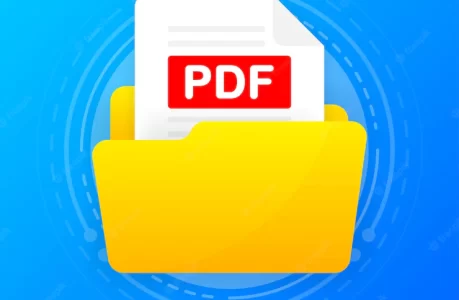Strategic Planning Software Demystified: A Comprehensive Guide

In the dynamic landscape of modern business, strategic planning stands as the compass guiding organizations toward success. The integration of technology into strategic planning processes has ushered in a new era of efficiency and precision.
In this comprehensive guide, we unravel the complexities surrounding Strategy Management software, exploring its nuances, key features, selection criteria, implementation best practices, challenges, solutions, and future trends.
What Is Strategic Planning Software?
Strategic Planning Software is not just a tool; it’s the linchpin in the realm of organizational foresight. It transcends traditional planning methods, leveraging technology to streamline and optimize the strategic decision-making process.
Acting as a catalyst for data-driven insights, this software fosters collaboration and provides a panoramic view of the business landscape. Its significance lies not merely in automating processes but in facilitating a profound understanding of organizational dynamics.
Key Features Of Strategic Planning Software
Unlocking the full potential of strategic planning software involves a comprehensive understanding of its multifaceted features. These features not only distinguish top-tier software solutions but also shape the transformative impact they can have on organizational strategies.
- Robust data analysis: process vast datasets, providing in-depth insights for informed decision-making.
- Advanced forecasting capabilities: leverage advanced algorithms for real-time forecasting, anticipating market trends.
- Collaboration tools: facilitate seamless communication, fostering a collaborative culture within teams.
- Integration capabilities: ensure cohesion by seamlessly integrating with other business tools and systems.
- Scenario planning: allows modeling of different business scenarios, aiding in strategic decision-making.
- User-friendly interface: intuitive dashboards and customizable views that enhance user experience and accessibility.
These features collectively empower organizations to navigate the complexities of strategic planning efficiently. As a strategic ally, the software becomes a cornerstone for agility, collaboration, and informed decision-making in the ever-evolving business landscape.
Choosing The Right Strategic Planning Software
Selecting the ideal strategic planning software requires a nuanced approach.
Here’s a detailed exploration of key factors to consider:
- Scalability: assess how well the software accommodates the evolving needs of your organization.
- Ease of use: prioritize solutions with an intuitive interface for seamless user adoption.
- Customization options: opt for flexibility, allowing customization to match your industry and goals.
- Compatibility: ensure seamless integration with existing systems and tools.
- Support and training: evaluate the level of support and training provided by the vendor.
- Cost considerations: understand the pricing structure and its alignment with your budget.
- User feedback: explore user reviews to gauge real-world experiences with the software.
- Security measures: scrutinize the implemented security measures for data protection.
- Trial period: opt for software with a trial period to test functionality in a real-world scenario.
- Vendor reputation: investigate the vendor’s reputation for reliability and customer satisfaction.
A meticulous evaluation based on these factors ensures that the chosen strategic planning software becomes an integral part of your organization’s strategic arsenal. Informed choices position organizations to derive maximum value from their investment and navigate the complex terrain of strategic decision-making with confidence.
Implementation And Best Practices
Embarking on the journey of implementing strategic planning software is akin to charting a course into uncharted waters. Success hinges not only on the choice of the right software but also on a well-thought-out implementation strategy.
Initiatives begin by aligning the software with organizational objectives, garnering support from key stakeholders, and establishing a robust training program. Continuous monitoring is a compass that ensures the ship stays on course, facilitating a smooth transition and maximizing the utilization of the software’s capabilities.
Challenges And Solutions
The implementation of strategic planning software is not without its challenges, but understanding and proactively addressing these hurdles is crucial for successful integration.
Let’s delve into some common challenges and explore viable solutions:
Resistance To Change
- Challenge: employees may resist adopting new technologies, fearing disruption to established workflows.
- Solution: Foster adaptability through comprehensive communication on the benefits of the software. Provide robust training to ease the transition and emphasize how the software enhances their work.
Data Security Concerns
- Challenge: concerns about the safety of sensitive information may arise, given the increasing emphasis on data security.
- Solution: implement robust cybersecurity measures, including encryption protocols and access controls. Ensure compliance with industry regulations to instill confidence in the software’s security.
Lack Of User Engagement
- Challenge: if users are not fully engaged, the software’s potential may not be fully realized.
- Solution: encourage active participation through training programs and continuous communication. Showcase success stories and emphasize how the software contributes to individual and team goals.
Integration Issues
- Challenge: ensuring seamless integration with existing systems can be complex and may lead to data silos.
- Solution: work closely with the software provider to navigate integration complexities. Prioritize software solutions with proven compatibility and a track record of successful integrations.
Implementation Delays
- Challenge: unforeseen delays can hinder the timely deployment of the software.
- Solution: develop a comprehensive implementation plan with realistic timelines. Anticipate potential roadblocks and have contingency measures in place to address unexpected challenges swiftly.
Future Trends In Strategic Planning Software
As the wheel of technological progress continues to turn, so too does the landscape of strategic planning software. Artificial intelligence and Machine Learning are emerging as transformative elements, ushering in an era of predictive analytics and automation.
The future promises not just incremental improvements but a paradigm shift, with more intuitive interfaces, enhanced data visualization, and a deeper integration of AI-driven insights into the decision-making process. Organizations that position themselves at the forefront of these trends will wield a strategic advantage in the competitive business environment.
Conclusion
In conclusion, Strategic Planning Software is the bedrock upon which successful organizations build their futures. By understanding its intricacies, selecting the right fit, and navigating the implementation challenges, businesses can unlock a new level of strategic prowess.
As we venture into the future, the evolving trends in strategic planning software signal a shift toward more intelligent, data-driven decision-making. Embrace the potential of strategic planning software and chart a course toward sustained success in the ever-evolving business landscape.
Read Also:


























Leave A Reply